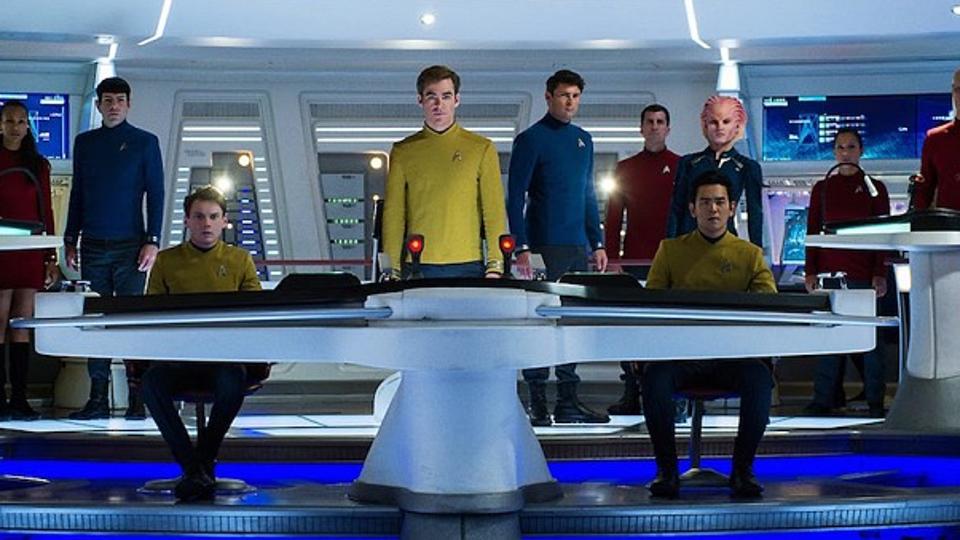Everything that Star Trek got right: A look at future tech that’s already here
We‘re 3D printing food, video-chatting. We have real-time translator apps that can even translate Klingon. And today’s visionaries are planning their retirement on Mars!

When I met Elon Musk in March 2012, he told me that he planned to build spaceships and retire on Mars. We had all been drinking that evening, so I thought it was the wine. I have since learned that he was dead serious: Musk fancies himself a modern-day James T Kirk, captain of the fictional USS Enterprise in Star Trek. He is in fact building Tesla terrestrial sustainable transport vehicles and spaceships for interplanetary travel.
The amazing future we saw in Star Trek may arrive 300 years ahead of the TV show's timeline. Technologies are advancing at an incredible pace and in some cases are more advanced than the Enterprise's.
Captain Kirk's communicator, for instance, didn't receive e-mail, play music, surf the web, provide directions, or take photos. It also didn't tell you jokes, as Google Assistant does. It was an inspiration for the 1990s flip phones, which have evolved into smartphones far more advanced than the communicator.
Do you remember the tricorder, the Apple TV-sized medical instrument that Dr McCoy used to check a patient's vitals? Try the Apple Watch. Now nearly four years old, it can detect atrial fibrillation, hypertension, sleep apnea, even monitor glucose levels. Apple plans to turn our smartphones into medical tricorders, as do Google, Microsoft, Samsung and others.
One New Delhi startup, HealthCubed, has developed a portable compact medical device that provides more than 40 measures and tests, including blood pressure, electrocardiography, blood oxygenation, heart-rate variability, blood sugar and urine protein, and is able to diagnose diseases such as HIV/AIDS, syphilis, dengue fever and malaria, with healthcare implications for millions across India.
We already have Star Trek-like video-chat capabilities on our smartphones, with Skype, WhatsApp, and FaceTime; and these don't require the large, clunky monitors that we saw on the sci-fi show.
Star Trek replicators could print food and everyday objects in seconds. Today's 3D printers are version 0.1 of this technology, able to create objects in plastic, metal, glass, titanium, and biomedical cells, though painfully slowly. Give them a few years, and they will become as fast and inexpensive as our laser document printers are. By 2030, we can expect to be 3D printing our dinner as well as our electronics.
Wasn't it strange that no matter what planet the crew of Star Trek visited, everyone seemed to speak English? This was made possible by the Universal Translator, a device worn on the lapels of their shirts. The Google Translate and Microsoft Translator apps are already doing this across scores of languages (about 104 for the former, and 60 for the latter). They also let you hold your phone camera over gibberish text and have it translated instantly into a script you recognise. Microsoft's Translator, incredibly, even offers among its languages two types of Klingon!
The holodecks we saw in Star Trek were mind-blowing; the crew would walk into an otherwise empty room and experience a different vista. Try out the HTC Vive, Oculus, or PlayStation virtual-reality headsets, and you will realise that holodecks are only a few years away. The first time I used the Vive, I almost had a heart attack, because I lost my footing at the top of Mt Everest.
The most incredible Star Trek technology was the transporter. "Beam us up, Scotty," was all Kirk had to say to his chief engineer in order to find himself transported to the spaceship from a nearby planet. The transporter converted physical objects and people into energy patterns, "beamed" them to a target, and then reconverted them into matter.
Even on this we have made progress. Scientists have made significant breakthroughs in quantum teleportation, duplicating the spin state of an electron between one place and another through quantum tunneling — without transmitting matter or energy through the space intervening. The distance record is held by China, which teleported matter as far as 1,200 km using its quantum-enabled Micius satellite.
This is a technology that I have no interest in using, however; there is no way that I would willingly allow my atoms to be disintegrated in one location and reassembled in another. I would worry about a software bug or a hardware crash. We saw those too in Star Trek. I am content with my self-driving Tesla and look forward to the drones that will soon transport us between cities.
Yes, the flying cars we saw on TV are coming, and will likely take the form of human-transportation drones such as those China's EHang is testing in Dubai.
The most exciting Star Trek marvel of all — the Starship Enterprise — is also on its way. Musk's company SpaceX has built heavy, reusable rockets; docked a spacecraft with the International Space Station; and returned with cargo. And Musk isn't alone, billionaires such as Richard Branson and Jeff Bezos are building spacecraft too.
We really can create the future of our dreams if we make the right choices and use technologies to benefit all! All it takes is the right kind of dream, and the right kind of dreamer.
(Vivek Wadhwa is a tech entrepreneur and academic, and author of Driver in the Driverless Car. He is Distinguished Fellow & Adjunct Professor at Carnegie Mellon's School of Engineering and Distinguished Fellow at the Labor & Worklife Program at Harvard Law School)
Catch all the Latest Tech News, Mobile News, Laptop News, Gaming news, Wearables News , How To News, also keep up with us on Whatsapp channel,Twitter, Facebook, Google News, and Instagram. For our latest videos, subscribe to our YouTube channel.

























